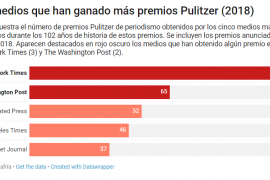5. AUTHENTICITY AND EXCESS: The Passion of the Christ (2004), Mel Gibson
We’ll conclude our series of perspectives on the Passion with a much more recent film, the tremendously costly effort directed by Mel Gibson, with the clear, straight-forward title: The Passion of the Christ. A film that aims to faithfully depict the sacred texts, the authorised sources, but does make use of some details that aren’t to be found in the canonical gospels. All to recreate an authentic depiction of the life and, above all, death of Christ from the scene in the garden of Gethsemane, in which an anguished Jesus Christ addresses God to ask him, if he can, to save him the suffering he knows awaits him. We know he finishes this request with the well-known and practically unacceptable “Thy will be done”. Almost from the beginning, then, the film looks at Christ’s pain in his final hours, subjected to the abuse of the masses and having to accept it despite his clear displeasure. The temptation to avoid the end of that suffering is at the core of Martin Scorsese’s interesting film The Last Temptation of Christ (1988), which although less careful in terms of appearance makes a wise choice in focusing on the crisis on the cross itself, once the son is separated from the father, split from his own nature.
Gibson’s film is less concerned with posing theological issues, insisting on recreating every last detail of the context of Christ’s life. Highly symptomatically of this is the use of the languages that would have been heard at the time: Hebrew, Aramaic and Latin, the latter spoken only by the Romans. The reproduction of the historical circumstances is so strikingly meticulous that no other film can stack up in this regard, in sharp contrast to the parodies with their plastic-looking helmets and Christ’s suffering depicted through over-exaggerated acting. Quite to the contrary, this meticulous approach is also applied to the literal understanding of Christ’s fate, which is to experience the extreme suffering in his human form. Meaning that his flesh is abused without hesitation, his body mortified in the most unjust, traitorous way. The authorities’ cynicism serves up what the masses demand on a silver platter. The offering is memorable, and also reminiscent of Bach’s Passions: given the chance to free one of the prisoners, they call out “Barabbas!”, choosing him over the son of God.

Jesus Christ’s sentence is upheld and he will continue suffering to the limits of the conceivable, beyond anything reason could tolerate. The suffering is unspeakably prolonged on his way of sorrows, or via crucis, on the road to Mount Calvary. Time passes more slowly than ever, emphasising the agony of the main character and that of the viewer, too, who would prefer to skip the great number and variety of ominous manifestations and insults proffered, impossible to imagine a priori. The grandness of Gibson’s version, very different in style, takes us back to the first perspective on spirituality, in the film by Carl Theodor Dreyer. Joan of Arc faces incomprehension and her impending martyrdom alone. She earns the empathy of viewers made uncomfortable by the lack of humanity of those judging her. The dehumanisation of Christ’s contemporaries also bothers the viewers, who sense that human beings are also capable of these animalistic behaviours. Much blood is spilt in Gibson’s version, threatening to spray the viewers, given the excessive realism of conveying the martyrdom. All of the psychology in the suffering of Joan of Arc is shown explicitly.

The suffering moves viewers so intensely that they can hardly follow Christ in the run up to his final moments. This way of generating empathy isn’t very subtle, but it is effective, even at the risk of quashing it: it is very tempting to just stop watching. The discomfort can even turn to nausea, and with nausea the anguished experience many theologians have read about at the moment of sacrifice. The fact that the violence seems gratuitous, unjustified, is completely intentional, and perhaps representative of the narrations in the scripture. Because the extreme cruelty of mankind then highlights the extreme sinfulness that anyone, admitting to be a symbolic party to that crime, could be free of over the course of history. There is no sin that cannot be cleansed, as long as one accepts the debasement of that action. All of this makes us think that the gratuitous violence is, in reality, quite necessary. This has nothing to do with the use of violence we find in other action films, even when it has been lauded for its artistic merits (Tarantino).
Less understandable, however, are some of the cinematographic resources used to convey the well-known excesses. The meticulous use of language to recreate that world contrasts with the abuse of techniques like slow-motion and computer-generated music that at times seems like it would be better suited to Blade Runner. The slow-motion shots lend a counter-productive sensation of hyper-realism in certain sections, not at all natural, belonging to a time neither then nor now (seeming more suited to the 1980s or 90s) and, of course, unthinkable for those who spoke Aramaic or Latin. These are secondary elements, clearly subjective, that contribute an unnecessary level of artificialness to a film that prides itself on being an authentic reflection of the inconceivable drama of God.


















